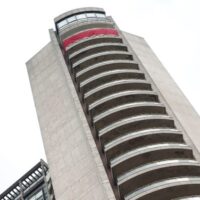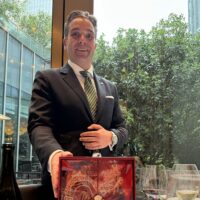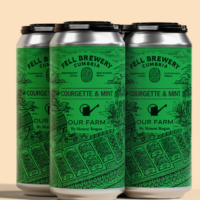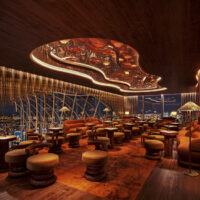Vintage Champagne may excite the experts, but non-vintage expressions require more skill to make. Lucy Shaw discovers the painstaking methods that cellar masters use to ensure their NVs represent the DNA of their house.

While glitzy prestige cuvées, long-awaited vintage releases, on-trend rosés and elegant blanc de blancs tend to turn heads and receive the lion’s share of column inches written about Champagne, the often overlooked brut non-vintage is the engine room of a Champagne house and usually accounts for around 80% of its total sales.
While perhaps less romantic than vintage Champagne, which is able to offer its imbibers a snapshot of a single year, distilling warm September sunshine and cold November rain into a liquid expression of the cards Mother Nature dealt the grape growers that year, brut non-vintage is an equally compelling proposition if you consider the hundreds of components that go into it. Cellar masters are the magicians of the wine world, able to create a consistent style of wine each year amid increasingly erratic weather conditions.
Like conductors getting the best out of their orchestras, the chef de cave must decide which grapes from which plots will end up in the final blend, and must be equipped with the ability to see into the future, imagining what the often aggressively acidic base wines will taste like in sparkling form. They must also be able to imagine how they will gracefully blend with one another into an elegant and instantly recognisable ensemble. Given the magnitude of the task, which needs to be undertaken each year, brut non-vintage as a style deserves more respect than it gets.

While most Champagnes produced during the 19th century were sweet, a style particularly favoured by the Russians, in 1846 Perrier-Jouët boldly broke with tradition when it released its lightly dosed Cuvée K, which was designed specifically for British palates. Derided at first for being too severe and ‘brute’-like, the visionary house was ahead of the curve, and the dry ‘brut’ style eventually became the norm in the region.
“Cuvée K was dosed at a sugar level of less than 5% – daringly little in an era when Champagnes regularly contained up to 40% sugar. Perrier-Jouët became renowned for its dry Champagnes, which it was able to produce because its high quality grapes required very little added sugar – a philosophy maintained to this day,” says the house’s seventh cellar master, Hervé Deschamps.
After 35 years at the helm, Deschamps will soon be handing over the reins to Séverine Frerson, who moved to Perrier- Joust in September, just four months after being named the chef de cave of Piper-Heidsieck.
Proving how integral it is for newly appointed cellar masters to fully understand a house’s specific style, over the next few years Frerson will work alongside Deschamps to learn all of his secrets so as to preserve and uphold Perrier-Jouët’s elegant signature style, characterised by its delicate floral profile and notes of peach, pear and honeysuckle.
“Every harvest brings its share of challenges, and it is my duty to maintain the consistency of the house,” says Deschamps. “We’re seeing more incidences of frost and hailstorms in spring than we used to, which is affecting the vines. Similarly, as summers are getting warmer, the harvest starts earlier each year. Tasting the vins clairs and imagining how they are going to age is the hardest part of my job.”
Having a discernable and unique house style is a way for Champagne houses to win loyalty in a crowded and competitive market. Consumers tend to flirt with different styles of brut non-vintage when they first begin their Champagne journey but soon discover which house styles align with their palates, and often end up staying loyal to one or two brands. Among the houses known for using a high proportion of Pinot Noir in their brut non-vintage blends are Bollinger, Piper-Heidsieck and Veuve Clicquot, with Bollinger using 60% Pinot in its blend and Piper and Veuve between 50%-55%.
Bollinger’s brut non-vintage, ‘Special Cuvée’, was given its name in 1911 from owner George Bollinger’s British agent. More than 85% of the grapes that go into the expression hail from grands and premiers crus sites. Special Cuvée benefits from the addition of reserve wines that have been aged in magnum for up to 15 years. Adding further complexity, the fizz is aged for more than 30 months before release, leading to notes of roasted apples, brioche, walnuts and spice.
Like Perrier-Jouët, Veuve Clicquot was early to the brut non-vintage party, releasing its now iconic Yellow Label in 1877 to cater to the British desire for dry Champagnes. Cellar master Dominique Demarville is the current custodian of the brand, and each year must create a style that delivers both power (predominantly from the Pinot) and finesse (imbued by the Chardonnay). Helping to maintain Yellow Label’s signature style, which marries intensity with freshness, Demarville uses a high proportion of reserve wine in the blend each year – up to 45% in some years. Piper-Heidsieck, meanwhile, sources grapes from more than 100 crus for its Cuvée Brut, and uses an average of 20% reserve wines aged between a year and 20 years old.




